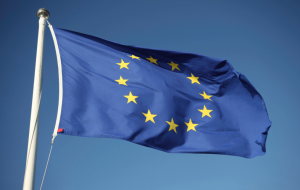Join Our Telegram channel to stay up to date on breaking news coverage
The first significant regulatory system for the cryptocurrency business was agreed upon by EU authorities on Thursday.
After hours of discussions, the European Commission, EU parliamentarians, and member states reached an agreement in Brussels. Last night, three major financial institutions finalized measures to combat cryptocurrency-based money laundering.
Your capital is at risk.
Details in Brief About EU’s MiCA Regulations
At a time when Bitcoin is having perhaps the worst period in more than a decade, the new restrictions are particularly harsh for digital assets.
An important piece of legislation known as MiCA (Markets for Crypto-Assets) has been agreed upon to make life more difficult for many participants in the crypto market, including exchange operators and the issuer of these stablecoins, tokens that are intended to be pegged to existing assets such as the dollar.
Requirements on Part of Stablecoins
Stablecoins like Tether and Circle’s USDC will be obliged to keep sufficient reserves to satisfy redemption requests in the case of large withdrawals under the new rules. Stablecoins that get too large may potentially face a daily transaction cap of 200 million euros.
ESMA, the European Securities and Markets Authority, will have the authority to prohibit or limit crypto platforms if they fail to adequately safeguard investors or pose a threat to the integrity of the market or financial stability.
EU politician Stefan Berger also said this historical day when crypto-asset issuers will have legal clarity, service providers will be guaranteed equal rights and consumers and investors would have high standards in a unified marketplace because of a harmonized market.
Energy Intensive Units To Be Made More Accountable
As part of MiCA, companies will be required to declare their energy use and the environmental effect of digital assets.
Coin mining, the energy-intensive process of minting new currency units, was previously proposed to be eliminated. Lawmakers rejected it in March, though.
However, trading platforms will be required to inform users of the risks connected with trading digital tokens, such as Bitcoin, in accordance with the new regulations.
Non-fungible tokens (NFTs), which indicate ownership in digital properties like art, were not included in the proposed solutions. Within the next 18 months, the EU Commission must determine if NFTs require their own system.
As a measure to decrease the anonymity of some crypto transactions, regulators came to an agreement on Wednesday. In the wake of Russia’s escalating invasion of Ukraine, authorities are concerned about the use of crypto-assets to launder ill-gotten wealth and avoid sanctions.
The 1,000-euro barrier for reporting transactions between exchanges and so-called un-hosted wallets owned by individuals is a sensitive problem for crypto aficionados who frequently trade digital currencies for privacy concerns.
Your capital is at risk.
How LUNA Crash Forced Government to Bring Regulations
The regulations are based on the demise of TerraUSD, a so-called algorithmic stablecoin that utilized a complicated algorithm to maintain a $1 value. Hundreds of billions of dollars were wiped off the crypto market as a result of the fiasco.
EU officials aren’t enthusiastic about stablecoins in general according to Blockchain for Europe’s secretary-general, Robert Kopitsch.
Since Facebook’s disastrous effort at issuing its own token in 2019, policymakers have been cautious of such tokens, which aim to be tied to current assets, such as the dollar. Officials were concerned that private digital tokens may pose a danger to national currencies, such as the European Union’s single currency.
To that end, Tether’s Chief Technology Officer (CTO) Paolo Ardoino said that the world’s largest stablecoin issuer, Tether, appreciated the regulatory clarification provided by MiCA, which he described as “one of the more advanced efforts to date.”
Circle’s chief strategy officer, Dante Disparte, added that the EU framework was a key milestone.
He said that MiCA would be to crypto what GDPR was to privacy, citing the breakthrough EU data protection standards that set the pattern for comparable laws elsewhere in the world, including California and Brazil.
Step In the Right Direction
Digital assets have never been regulated as comprehensively as MiCA has. Even though some of its tougher laws have scared a few crypto businesses, many industry insiders believe Europe might lead the way on crypto regulation.
It is believed that the rules would come into effect by as early as 2024, making the EU ahead of both the United States and Britain in implementing legislation specific to the crypto market.
Adviser at Presight Capital, Patrick Hansen, remarked that the European crypto industry has to be harmonized in order to become larger and build a healthy yet controlled environment. Fragmentation is the primary cause of the absence of major crypto firms in Europe at this time.
Your capital is at risk.
According to Katherine Minarik, vice president of legal at Coinbase, the company is pursuing licenses in numerous European nations, including France. According to her, under MiCA, the exchange would be allowed to export its services to all 27 EU nations.
Read More:
- These are the Best Bitcoin Alternatives
- Complete Guide to Earning Passive Income with Crypto Staking
- Should blockchain companies be worried about the EU’s GDPR rules?
Join Our Telegram channel to stay up to date on breaking news coverage


